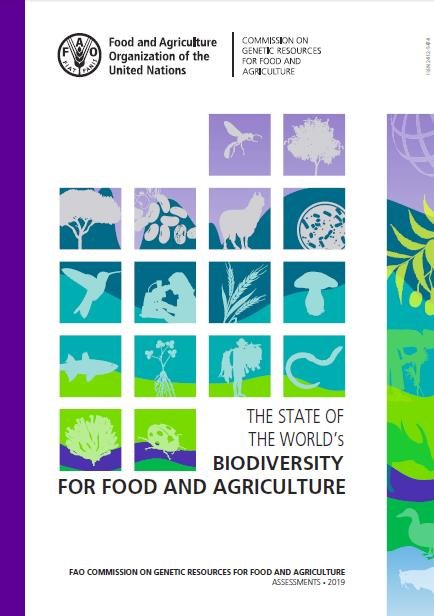- Share this article
- Subscribe to our newsletter
State of the World’s Biodiversity for Food and Agriculture
The report State of the World’s Biodiversity for Food and Agriculture presents evidence that the biodiversity that underpins our food systems is disappearing. Based on information provided by 91 countries, the report was published by the Food and Agriculture Organization of the United Nations (FAO) in February 2019.
Of some 6,000 plant species cultivated for food, fewer than 200 contribute substantially to global food output, and only nine account for 66 per cent of total crop production. The world’s livestock production is based on about 40 animal species, with only a handful providing the vast majority of meat, milk and eggs. Of the 7,745 local (occurring in one country) breeds of livestock reported globally, 26 per cent are at risk of extinction. Nearly a third of fish stocks are overfished, more than half have reached their sustainable limit.
Rapid decline of many species and ecosystems
Information from the 91 reporting countries reveals that wild food species and many species that contribute to ecosystem services vital to food and agriculture, including pollinators, soil organisms and natural enemies of pests, are rapidly disappearing.
Forests, rangelands, mangroves, seagrass meadows, coral reefs and wetlands in general – key ecosystems that deliver numerous services essential to food and agriculture and are home to countless species – are also rapidly declining.
The drivers of loss of biodiversity for food and agriculture cited by most reporting countries are: changes in land and water use and management, followed by pollution, overexploitation and overharvesting, climate change, and population growth and urbanisation.
Growing interest in biodiversity-friendly practices
The report highlights a growing interest in biodiversity-friendly practices and approaches. Eighty per cent of the 91 countries indicate using one or more biodiversity-friendly practices and approaches such as: organic agriculture, integrated pest management, conservation agriculture, sustainable soil management, agroecology, sustainable forest management, agroforestry, diversification practices in aquaculture, ecosystem approaches to fisheries and ecosystem restoration.
Conservation efforts, both on-site (e.g. protected areas, on-farm-management) and off-site (e.g. gene banks, zoos, culture collections, botanic gardens) are also increasing globally, although levels of coverage and protection are often inadequate.
What is needed to counter the trends that lead to biodiversity loss?
Most countries have put in place legal, policy and institutional frameworks for the sustainable use and conservation of biodiversity, but these are often inadequate or insufficient, according to the authors. They call on governments and the international community to do more to strengthen enabling frameworks, create incentives and benefit-sharing measures, promote pro-biodiversity initiatives and address the core drivers of biodiversity loss.
Greater efforts must also be made to improve the state-of-knowledge of biodiversity for food and agriculture, because numerous information gaps remain, the authors say. Many species have never been identified and described, particularly invertebrates and micro-organisms.
Moreover, there is a need to improve collaboration among policy-makers, producer organisations, consumers, the private sector and civil-society organizations across the food-and-agriculture and environment sectors. Opportunities to develop more markets for biodiversity-friendly products could be explored more.
The report also highlights the role the general public can play in reducing pressures on food-and- agriculture biodiversity. Consumers could opt for sustainably grown products, buy from farmers’ markets, or boycott foods seen as unsustainable.
(FAO/ile)
More information and download the report: http://www.fao.org/state-of-biodiversity-for-food-agriculture/en/





Add a comment
Be the First to Comment